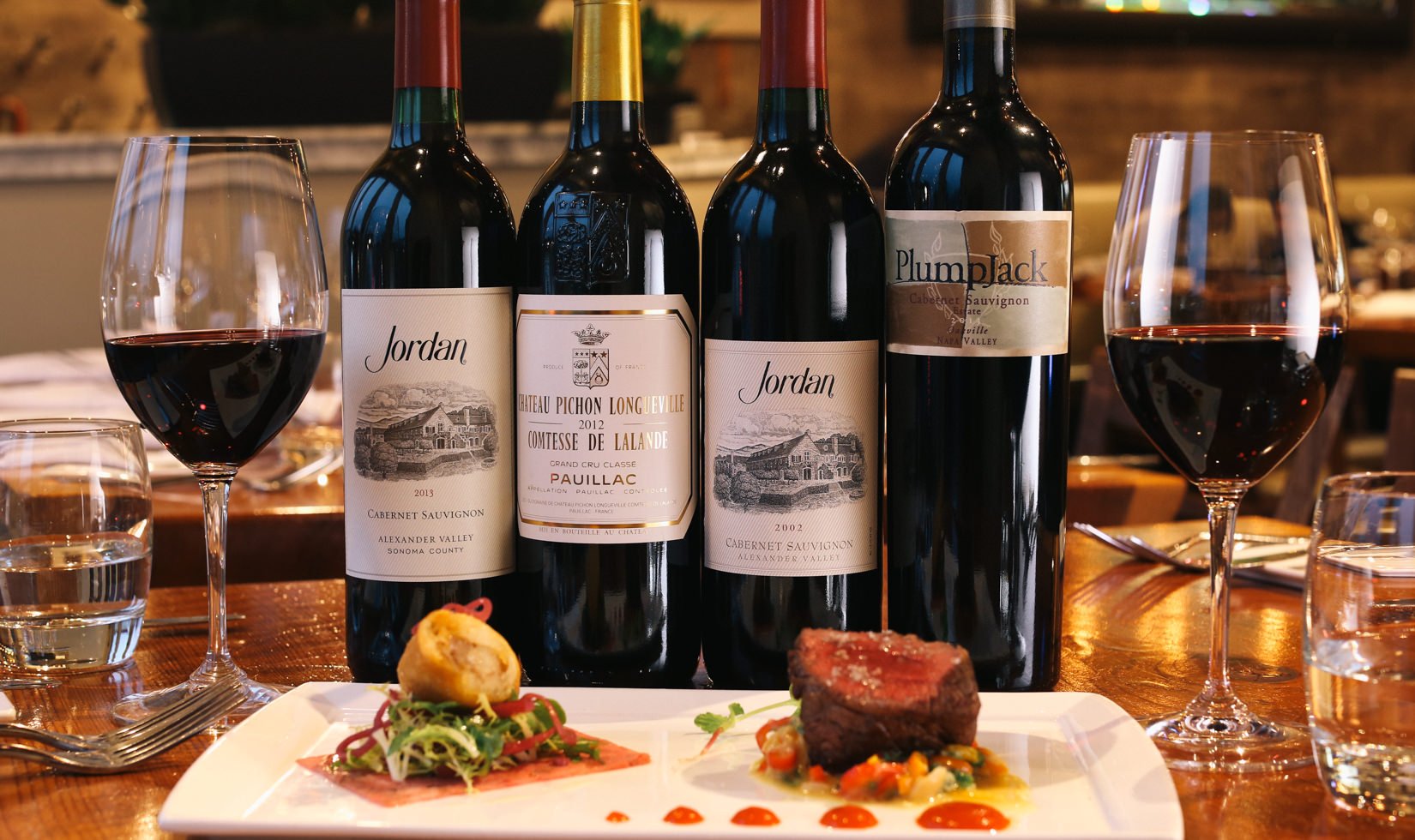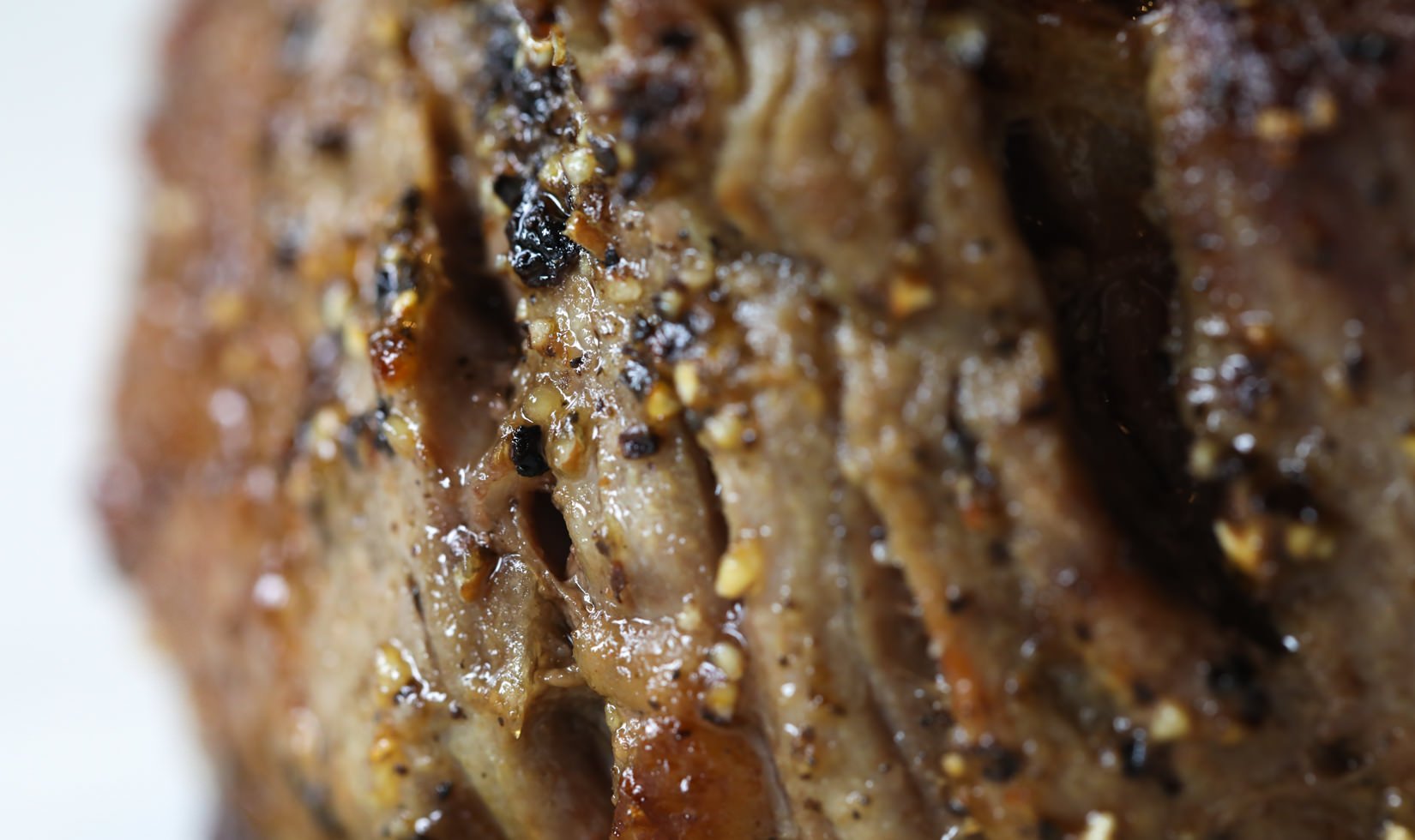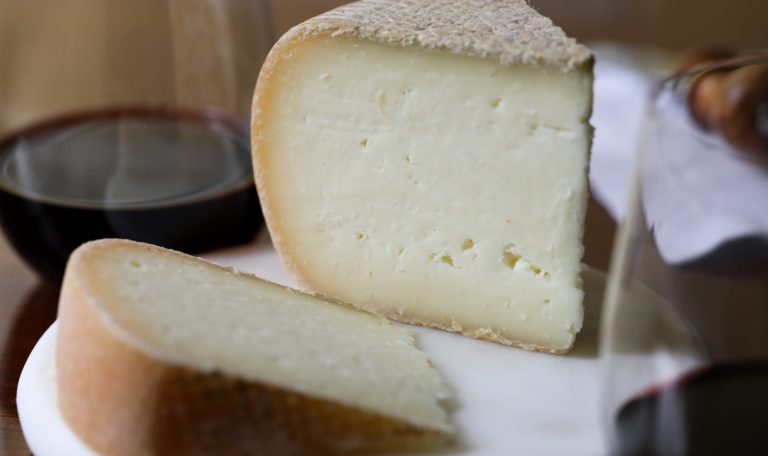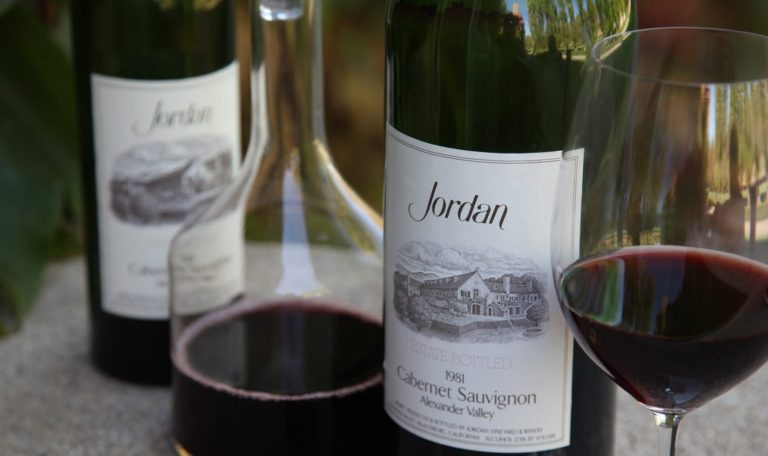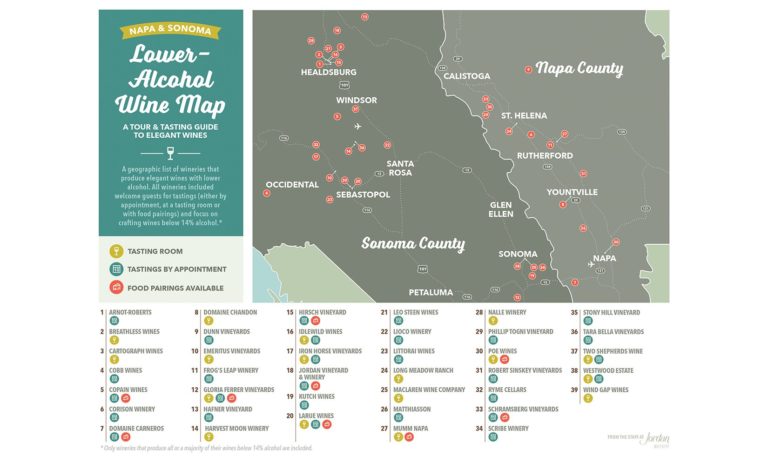There’s arguably no food and wine pairing more beloved by Americans than steak and a glass of cabernet sauvignon. Many U.S. restaurants, especially steakhouses, stock their wine lists with pages of these structured red wines. The combination is so naturally assumed—and celebrated—that diners tend to not overthink the pairing. A fine cabernet always tastes its best with an expertly grilled piece of beef.
Or does it?
After making cabernet sauvignon for 40 years, it’s easy to say with confidence that we have tasted dozens of different vintages of Jordan (and our favorite Bordeaux) with enough cuts of steak to make the World Steak Challenge judges blush. But we’ve never researched about how different styles of cabernet sauvignon pair with different cuts of meat. Young cabernets, old cabernets, soft cabernets, powerful cabernets—would one stand out as the best wine pairing for filet mignon, New York strip, ribeye and flat iron steaks? We put our palates to the test. The result? A handy steak and cabernet pairing guide with insight and tips for making the most of this carnivorous marriage.
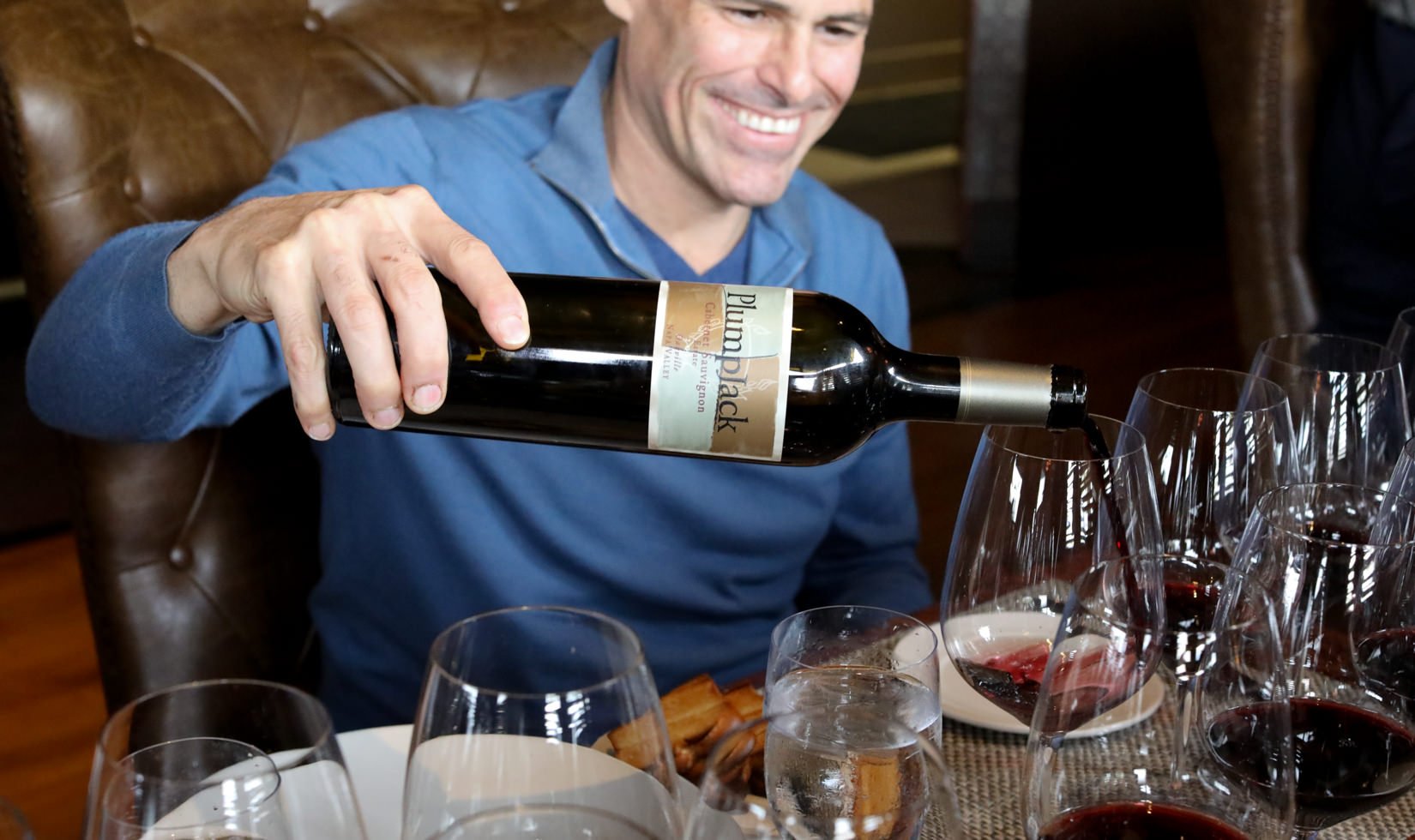
A little background on our research. I brought together the Jordan marketing, sales, winemaking and hospitality staff (and even a Master of Wine student) to truly test the food and wine pairing muscle of four different styles of cabernet sauvignon with four different cuts of beef. We limited ourselves to a young Sonoma cabernet with softer tannins and lower alcohol, a young Napa cabernet with firmer tannins and higher alcohol, a cabernet with 10-plus years of bottle age and a young Bordeaux. Tasting experiments were conducted at three restaurants—Valette in Healdsburg, Calif., Flagler Steakhouse in Palm Beach, Fla. and Stark’s Steakhouse in Santa Rosa, Calif.—with the same wines to ensure that our findings were consistent. The group of tasters assembled mostly prefer more elegant, balanced cabernets than the powerhouse style, but we vowed to be objective. Food and wine pairing is serious business, after all. At the end of the third tasting, we added two additional wines—a young Napa cabernet with lower alcohol and a young Sonoma cabernet with higher alcohol—to see if wine region versus style may have an impact on the pairings.
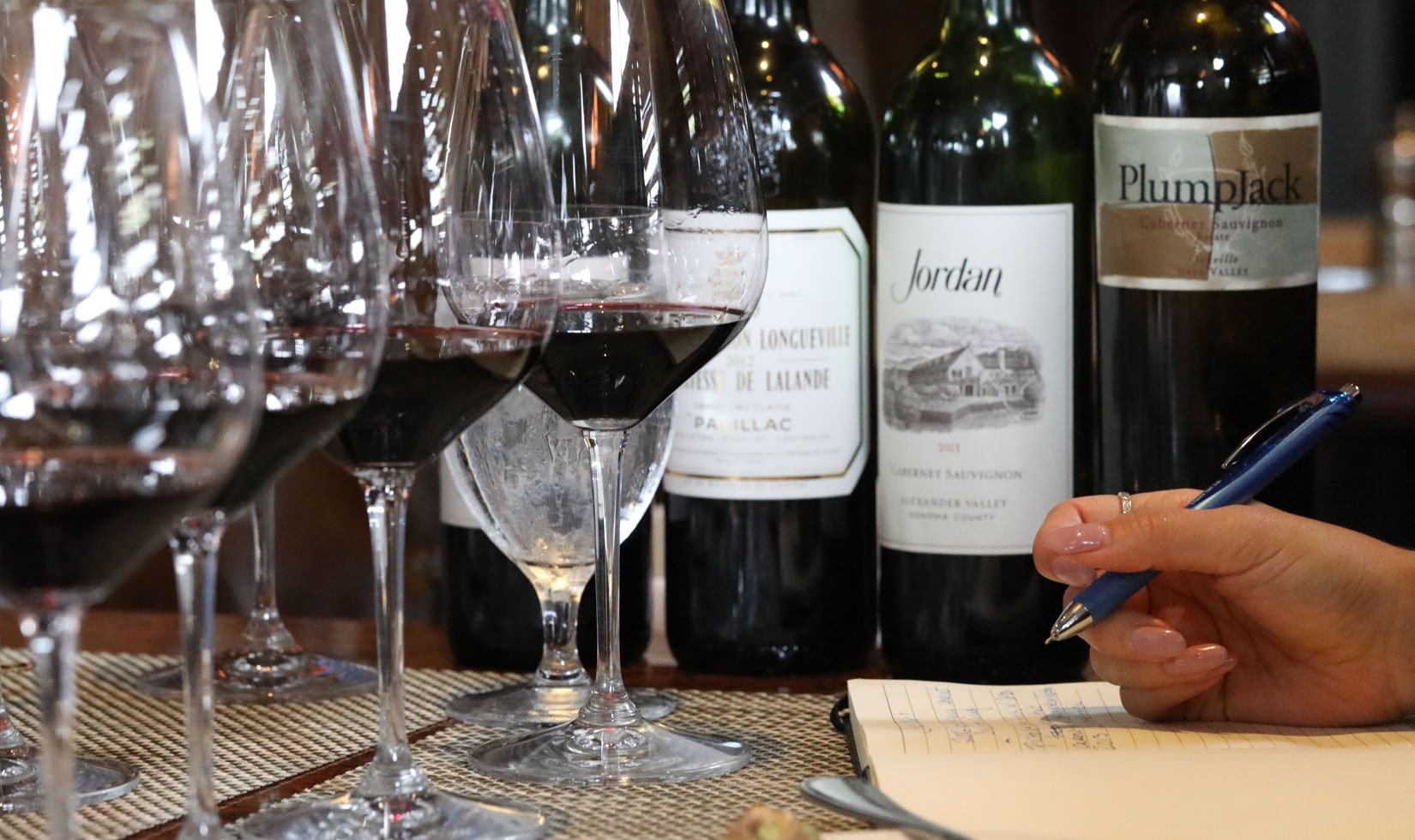
A big part of what makes cabernet and steak such a natural food and wine pairing is grounded in chemistry. The tannins found in grape skins and wine barrels deliver two characteristics to your taste buds: bitterness and astringency. Tannins bind with proteins and fats ferociously, and steaks are protein-rich and fat-heavy foods (though some cuts have less fat than others, as noted below). This means high-tannin red wines pair well with high-protein foods. When we take a sip of a tannic red, the tannins in the wine bind to natural saliva proteins in our mouths, making the wine taste less astringent. When we combine this sensory reaction with a juicy bite of steak, the wine’s tannins also bind with the protein and fat in the steak, making the wine taste softer and smoother. Basically, fats wash away the tannins on your tongue. A wine’s acid also cuts the fat in food, and a steak’s chargrilled edge mirrors the wine’s tannin. As red wines age, those tannins soften, and the wine becomes less astringent, but that doesn’t mean older cabernets are not great pairings with steak.
A summary of our overall impressions and recommendations follow in this steak and cabernet pairing guide—broken into 10 takeaway tips and an overview of each cut of steak with wine pairing notes. Wine prices listed are average retail prices, and “lower alcohol” is considered below 14%. Steak protein and fat contents were sourced from Men’s Fitness.
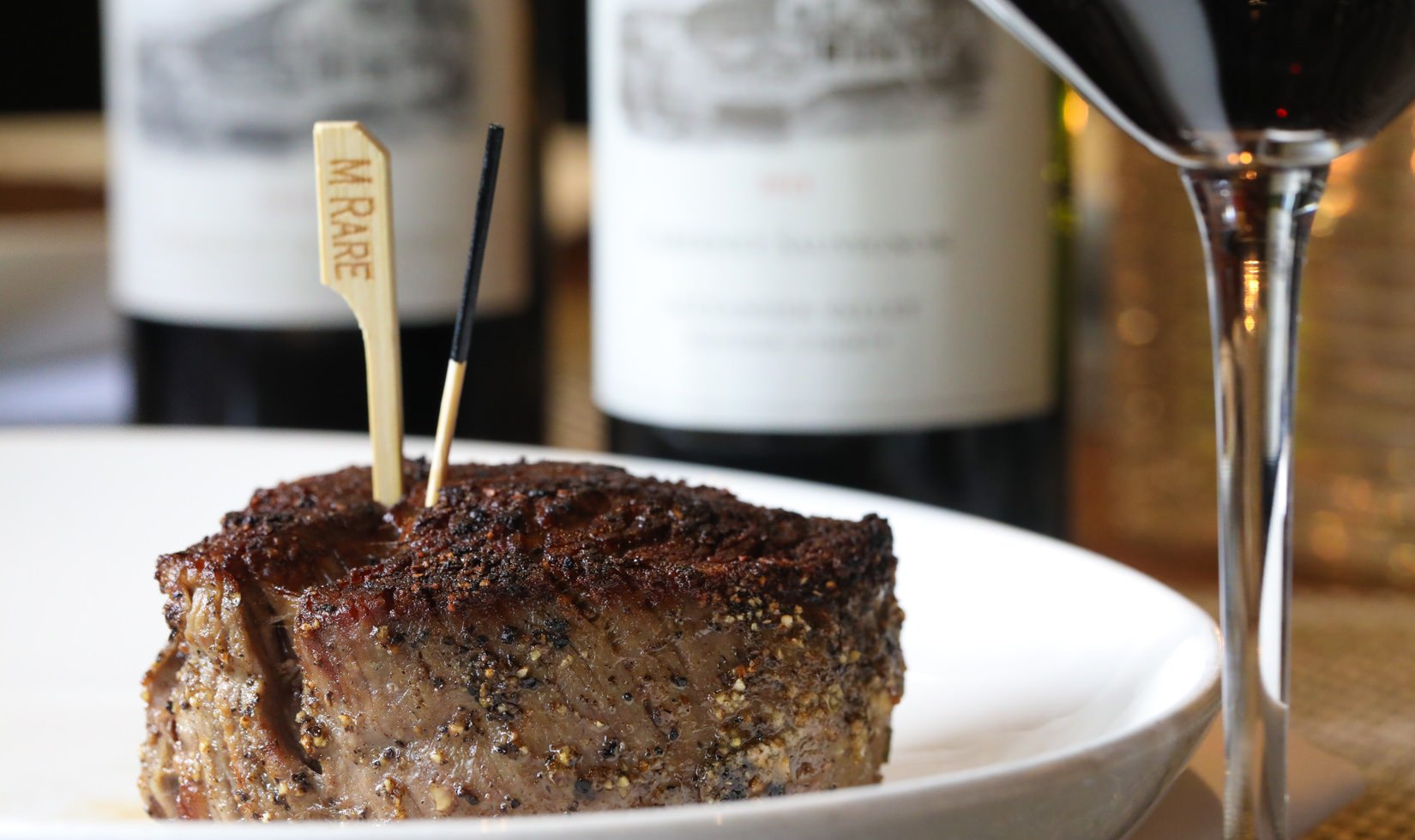
10 Tips for Pairing Cabernet Sauvignon with Steak:
- New York strip is the most versatile steak for pairing with different styles of cabernet sauvignon. The strip is mid-range in texture, flavor and fat, which contributes to its versatility.
- Red wines with a good backbone of acidity contrast with the texture of rich meats, such as filet and ribeye.
- Leaner cuts of beef, such as filet mignon, pair best with a leaner style of cabernet. Filet doesn’t have enough fat or beef flavor to stand up to a highly tannic, high-alcohol cabernet; the wine overshadows the food. Cabernets with high alcohol and lower acidity can taste sweet or astringent with a subtle cut like filet mignon.
- Fattier meats, such as ribeye, pair nicely with bold red wines that have ample tannin. The tannin acts as an astringent, cleansing the palate of the fattiness that coats our palates after a juicy bite of steak.
- More flavorful cuts of beef, such as ribeye and butcher cuts (flank, hanger and flat iron), typically pair best with fruit-forward, younger cabernets with more tannin. More flavorful the steak, the better the chance it will pair with a big cabernet.
- Older cabernets, which have less tannin, create a food and wine pairing where the wine’s more subtle fruit and spice flavors are elevated by the fat, protein and peppery spice in more flavorful cuts, such as ribeye and flat iron. This makes for a very attractive pairing that can be an equally enjoyable pairing with a younger, more tannic cabernet.
- Balanced cabernets—young and old—with lower alcohol, firm acidity and silky tannin are the safest bets—the most versatile wines with different cuts of steak.
- Big, high-alcohol cabernets often overpower the meat’s flavors and make the wine the focus.
- Grilling is a great tool to help different cuts of steak pair with different styles of cabernet. Grilled steaks with a thick char best pair with big, bold cabernets. The char masks the excess of tannins. If you prefer this style of wine, leave some fat on your steak and give it a good char (with fresh pepper) to help the steak stand up to the powerful wine. Chargrilling also complements the subtle nuances in cabernet that come from its toasted oak barrels.
- Seasoning steak with pepper helps complement the herbaceous and spice notes found in cabernet sauvignon. Benjamin Appleby, wine & beverage manager at Abe & Louie’s in Boston, explains it this way: “What makes cabernet sauvignon especially well-suited to steak is the peppery aroma unique to the variety that comes from pyrazines. As cabernet grapes ripen, the character of that pepper evolves along with the tannins and acidity to become, generally, softer. So, my rule of thumb is to pair fruitier, lusher wines with leaner cuts, and more structured, less ripe wines with the juicy steaks that can handle a bit of extra pepper.”
Wine & Steak Pairing Guide: Best Cuts of Beef with Different Styles of Cabernet
Filet Mignon
A cut taken from the smaller end of the tenderloin. Because it has less connective tissue, it’s considered the most tender of the fine beefs. Filet is lean yet has a rich, melt-in-your-mouth texture and subtle flavor. A 3.5-ounce serving contains 16 grams of fat and 48 grams of protein.
Best Pairing:
A young Sonoma cabernet sauvignon with soft tannins made for the most seamless pairing with the filet. The textural elements of the wine and the meat were complementary—the dark fruit, toasted oak and acidity in the wine worked with the meat’s rich texture. The wine’s fruit flavors popped on the palate, and the steak softened the tannin in the wine.
Wine: 2013 Jordan Cabernet Sauvignon Alexander Valley ($55)
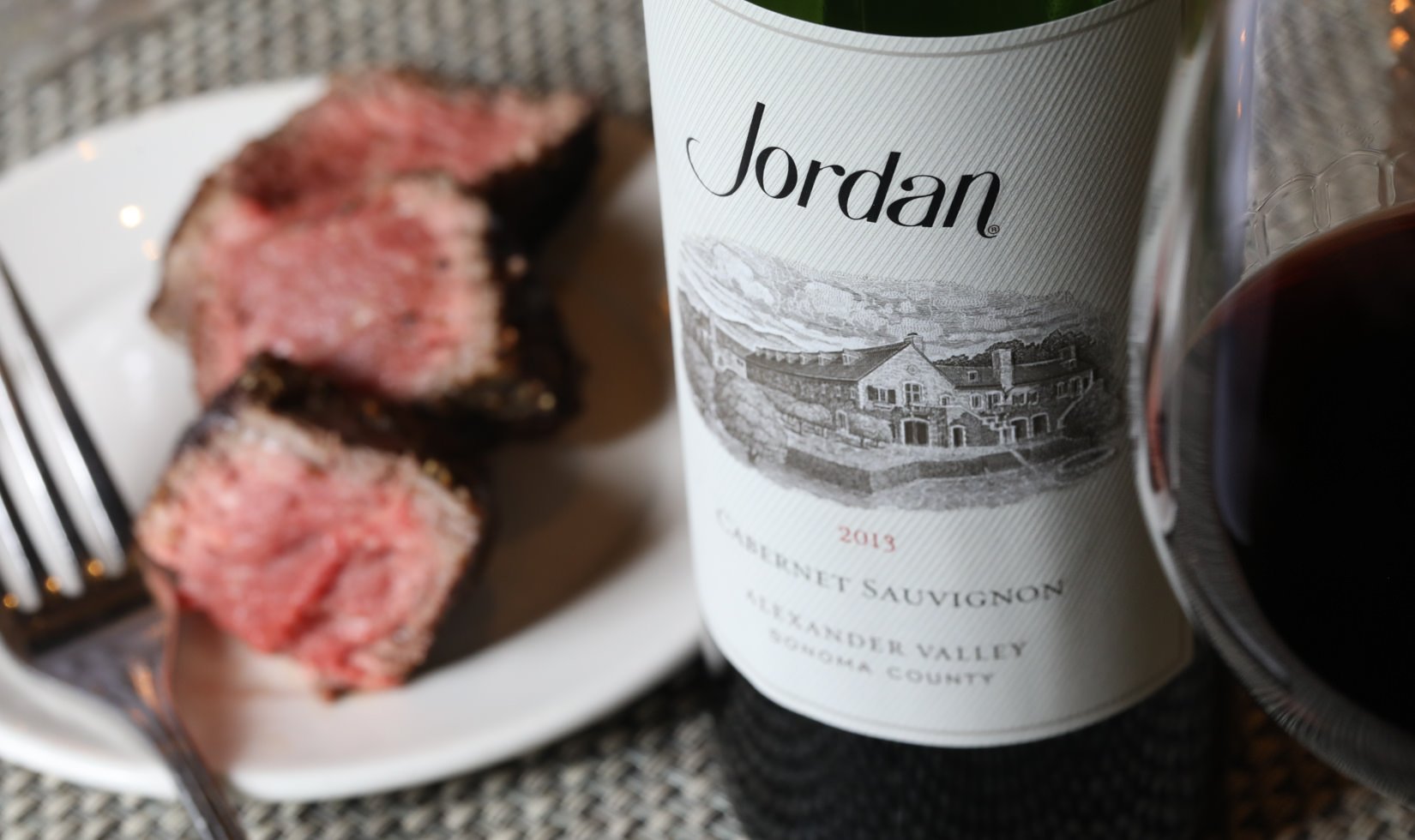
Runners-Up:
An older cabernet with lower alcohol and good acidity. Filets liberally seasoned with salt and pepper brought out subtle oak nuances—an almost toasty character—in the older wine, as well as cherry and dried fruit components. Overall, a balanced pairing, where both the meat and the cabernet were elevated.
Wine: 2002 Jordan Cabernet Sauvignon Alexander Valley ($119)
Young Bordeaux with lower alcohol can pair nicely with filet, but it all depends on the wine’s texture and steak spices. The silky texture of Bordeaux complements the rich texture of the filet, elevating the meat’s subtle flavors. In two of our tastings, the filet tasted more vibrant with the Bordeaux. During one meal, where the filet was liberally seasoned with fresh pepper and salt, the spices brought out the Bordeaux’s oak, overpowering the meat’s delicate flavors.
Wine: 2012 Pichon-Longueville Comtesse de Lalande Pauillac Bordeaux ($90)
Other Observations:
A young, bold Napa cabernet with higher alcohol (around 14.5-15.5%) and firm tannin can also work, but be mindful of those with higher sugar and lower acidity. The rich texture and protein of the steak helped cut through the firm tannin in a powerhouse cabernet, and the wine’s full body complemented the texture of the filet. But, those food and wine pairing harmonies are fleeting, in our experience. The cab’s jamminess and sweetness can overpower the delicate filet in just a few bites.
Wine: 2013 Plumpjack Cabernet Sauvignon Oakville Napa Valley ($125)
A young Napa cabernet with lower alcohol and silky tannins pairs well texturally with filet mignon, but in our tasting, the finish of the wine got shorter after a few bites. Still, a very enjoyable pairing.
Wine: 2013 Chateau Montelena Cabernet Sauvignon Napa Valley ($60)
Filet mignon can make a high-alcohol Sonoma cabernet taste astringent and hot with an herbal finish.
Wine: 2013 Lancaster Estate Cabernet Sauvignon Alexander Valley ($60)
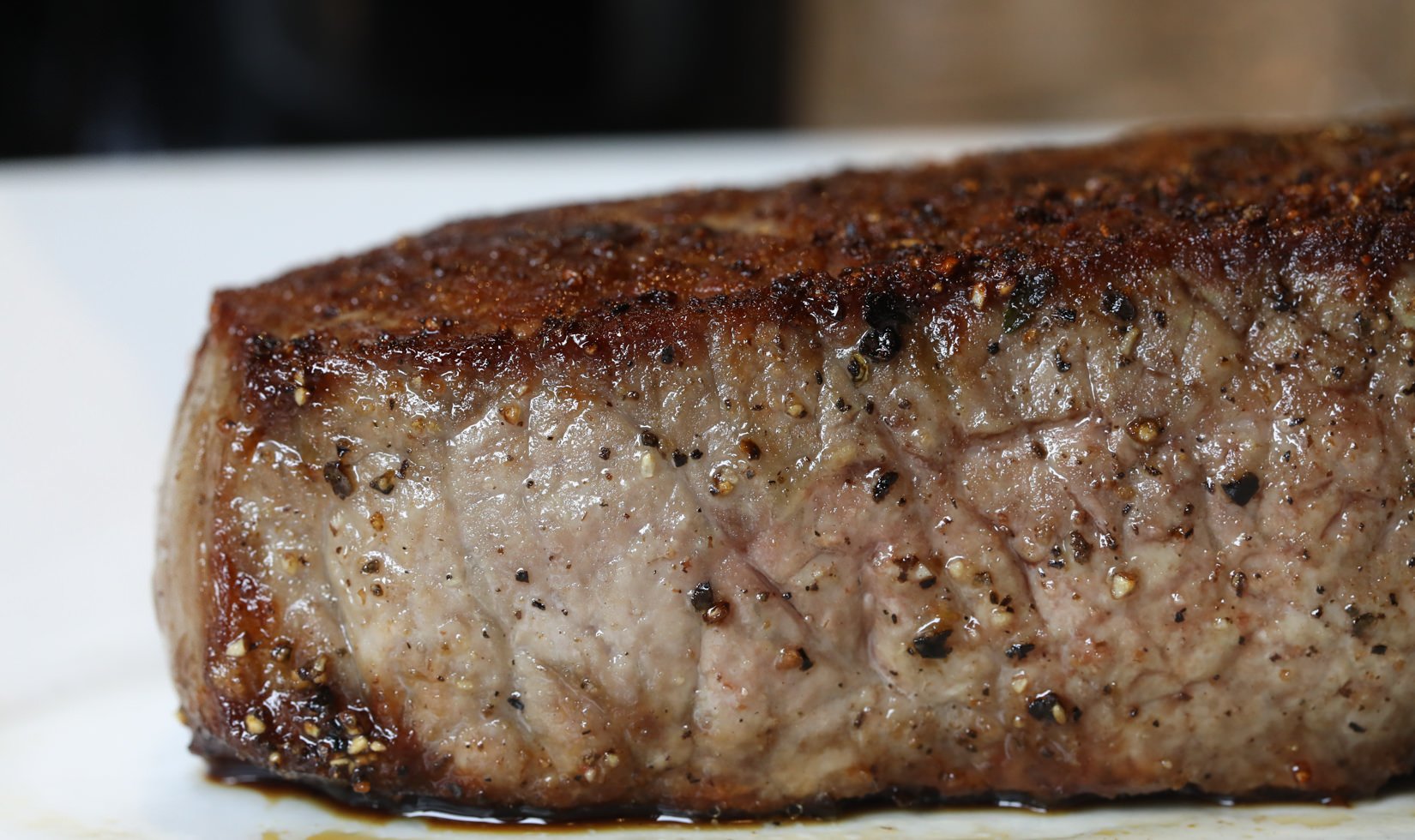
New York Strip
A steakhouse classic, this lean loin cut is known for its marbling, moderate tenderness and flavor. From the short loin of the cow, it has a tighter texture than filet or ribeye with good marbling and a strong beefy flavor. Also known as top sirloin or Kansas City Strip, it is a favorite of steakhouses. The most versatile steak for different styles of cabernet sauvignon. When serving New York Strip, choose whatever cabernet you prefer in terms of style because all pairings work on some level. A 3.5-ounce serving contains 18 grams of fat and 46 grams of protein.
Best Pairing:
A Sonoma cabernet sauvignon with about ten years of bottle age. The wine highlighted the steak’s flavor and texture rather than overpowering it. The steak made the fruit and acidity in the older wine brighter because the little tannin remaining in the older wine was further subdued by the steak’s protein. The chargrilled crust and spices on the steak complemented the oak structure in the wine, which had taken on more spice nuances with age. The crust helped mirror the toast of the wine barrel; this is considered a bridge element in food and wine pairing. It’s as if the chargrilling and the tannin cancel each other out, allowing the fruit and acidity remaining in the old wine to shine through. The meat made the wine taste younger, accentuating its red fruits. In our tastings, the older cabernet sauvignon also elevated the texture in this less fatty, leaner cut of steak.
Wine: 2002 Jordan Cabernet Sauvignon Alexander Valley ($119)
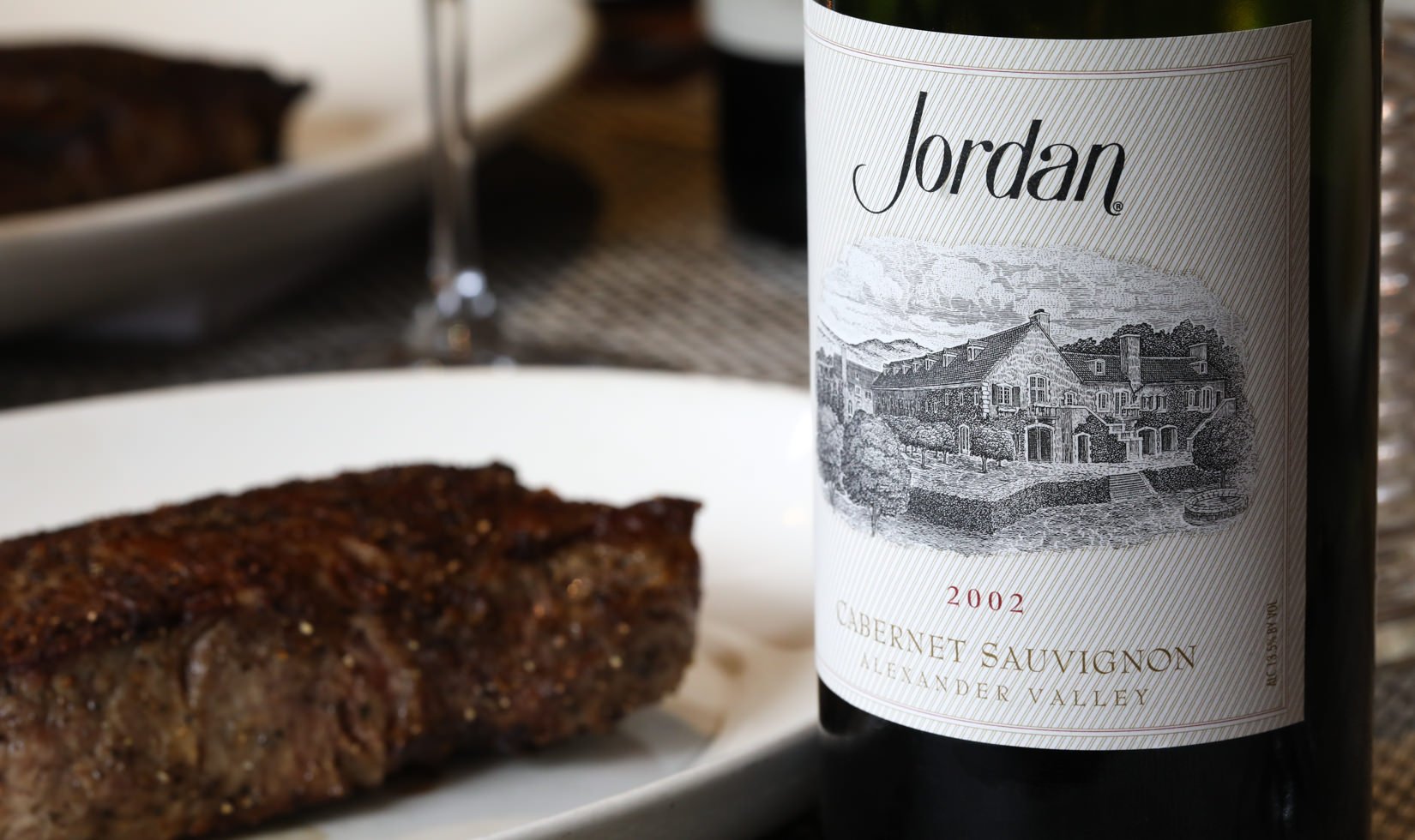
Runners-Up:
It was a tie between young cabernets from Napa and Sonoma with dark fruit, fine tannin and good acidity, but lower alcohol and less sugar. The steak brought out a little astringency in the Napa cabernet, but the peppery char on the skin of the strip steak was a beautiful pairing with the wine, elevating its toasted oak notes and bringing out baking spices on the wine’s finish. Dark fruits and acidity were nicely integrated. With the Sonoma cab, all aspects of the pairing were elevated at one tasting, but it was more of a neutral pairing at another meal. The strip steak’s grilled flavors were elevated; it brought out the dark fruit and natural acidity in the wine, and the meat didn’t compete with the cabernet’s lingering finish.
Wines: 2013 Chateau Montelena Cabernet Sauvignon Napa Valley ($60) and 2013 Jordan Cabernet Sauvignon Alexander Valley ($55)
A young Bordeaux with lower alcohol also offers a harmonious, seamless pairing. The wine didn’t compete with the food, though some herbaceous and leather characters came out. Add a butter sauce or mushrooms to help soften the herbal notes.
Wine: 2012 Pichon-Longueville Comtesse de Lalande Pauillac Bordeaux ($90)
Other Observations:
The big Napa cabernet with high alcohol became very sweet and tannic on the palate with the New York Strip. The wine’s toasty flavors were attractive in one pairing, but not in the others. At first, the well-charred crust on the steak seemed to complement the powerful, tannic structure of the wine; those spices helped the steak hold up longer with the powerhouse cabernet style, but only for 5-10 minutes, not the duration of the course. A few tasters preferred the big Napa cabernet with filet; others New York Strip.
Wine: 2013 Plumpjack Cabernet Sauvignon Oakville Napa Valley ($125)
A high-alcohol Sonoma cabernet also tasted very sweet after one bite of the steak and became hot on the finish.
Wine: 2013 Lancaster Estate Cabernet Sauvignon Alexander Valley ($60)
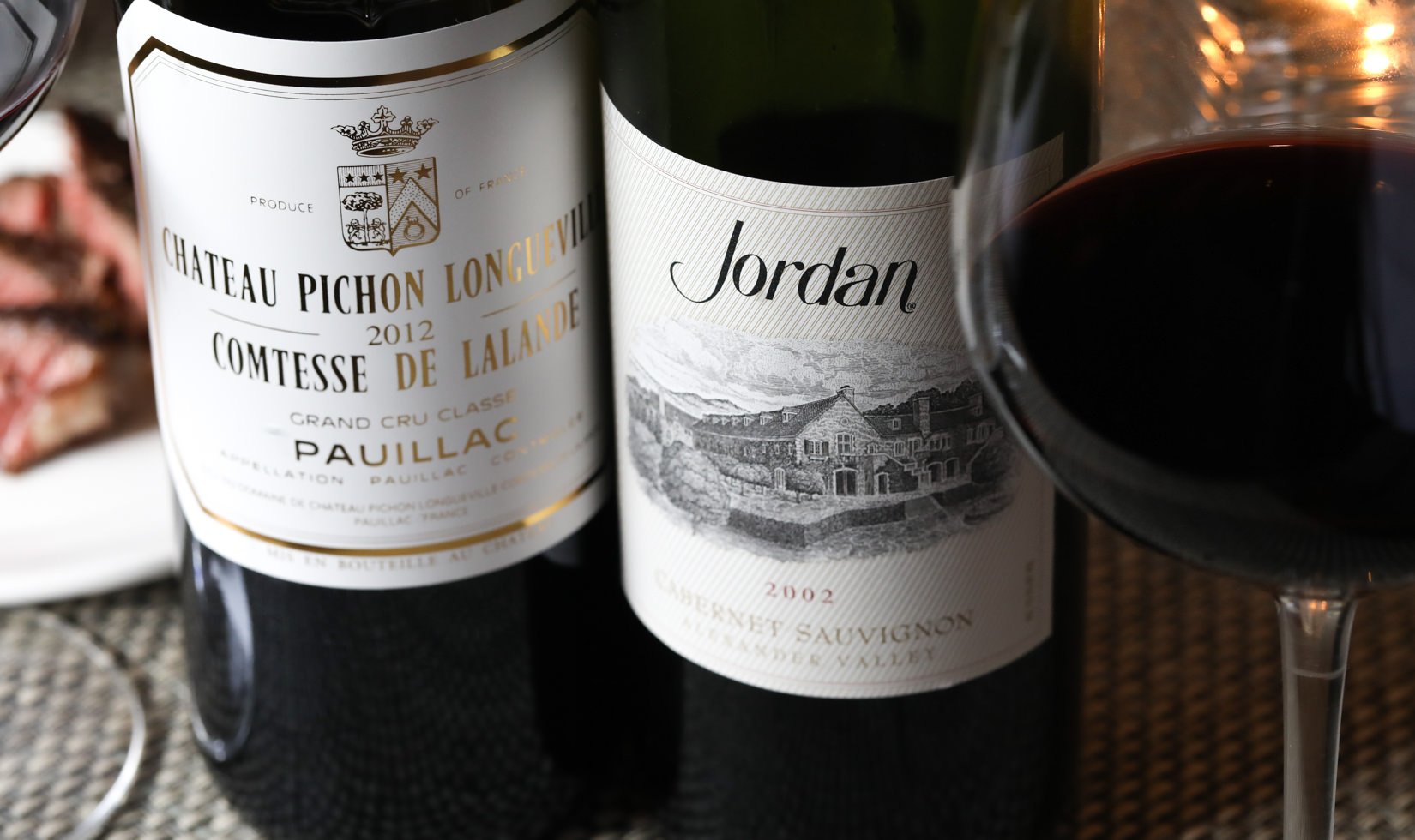
Ribeye
A cut from the rib section that is juicy and full-flavored. Known for its marbling, high fat content, and fast, easy cooking. Considered one of the best steaks for pan searing and one of the richest, beefiest cuts available. A 3.5-ounce serving contains 37.6 grams of fat and 30 grams of protein.
Best Pairing:
A young, elegant Bordeaux. Secondary, subtle aromas and flavors in cabernet work better with this rich, beefy steak—which you get with an older cab or a young Bordeaux. Though the steak overpowered the wine’s finish, the wine stood up surprisingly well to the fat and texture of the steak on the palate.
Wine: 2012 Pichon-Longueville Comtesse de Lalande Pauillac Bordeaux ($90)
Runners-Up:
An older California cabernet (at least ten years) with lower alcohol and some American oak aging. The steak’s crust and chargrilling highlighted the American oak and vanilla toast in the wine; a seamless pairing on the palate, but the wine took over on the finish, offering attractive cherry flavors. The older cabernet was patient with the steak and then the wine carried through on the finish and became the focal point of the pairing. The longest finish of any steak and cabernet pairing we tasted. It was both impressive—and contradictory to food and wine pairing science—that the ribeye created such a complex pairing with an older, more feminine cabernet. This could be attributed to the fact that the wine still had ample acidity to cut through ribeye’s high fat, and the spices and savory flavors of the steak complemented the complex spice, herbs and red fruits in the wine. Expect similar pairings of older cabs from Corison, Montelena and Ridge.
Wine: 2002 Jordan Cabernet Sauvignon Alexander Valley ($119)
A young, powerful Napa cabernet. When the ribeye is grilled heavily—the fatty edges almost caramelized, it stands up to the sweet fruit and extracted style of a big cabernet. Ribeye was the only cut that lengthened the finish of this wine. The heavy char on the steak also brought out the toasty-oak notes in the cab. If you love brawny cabs with alcohol and sweetness, ribeye is the best steak pairing. One taster called this pairing, “The Berlin Wall of Sweetness.”
Wine: 2013 Plumpjack Oakville Cabernet Sauvignon Napa Valley ($120)
A young Sonoma cabernet with lower alcohol and good acid structure. The char on the steak lingered on the finish at one tasting, but the ribeye brought out a metallic flavor in the wine on the finish at another tasting. This bolder vintage of Jordan made for a more complex food and wine pairing but was also controversial. We expected this highly structured wine, from the powerful 2013 vintage, to pair best with a fattier cut of meat, but the Bordeaux and older Jordan cabernet pairings worked better. Cooking the ribeye to medium—and/or decanting the wine for one hour before serving—could eliminate the metallic edge found during one of the tastings.
Wine: 2013 Jordan Cabernet Sauvignon Alexander Valley ($55)
Other Observations:
The high-alcohol, young Sonoma cabernet tasted very hot and its tannins raw with the ribeye.
Wine: 2013 Lancaster Estate Cabernet Sauvignon Alexander Valley ($60)
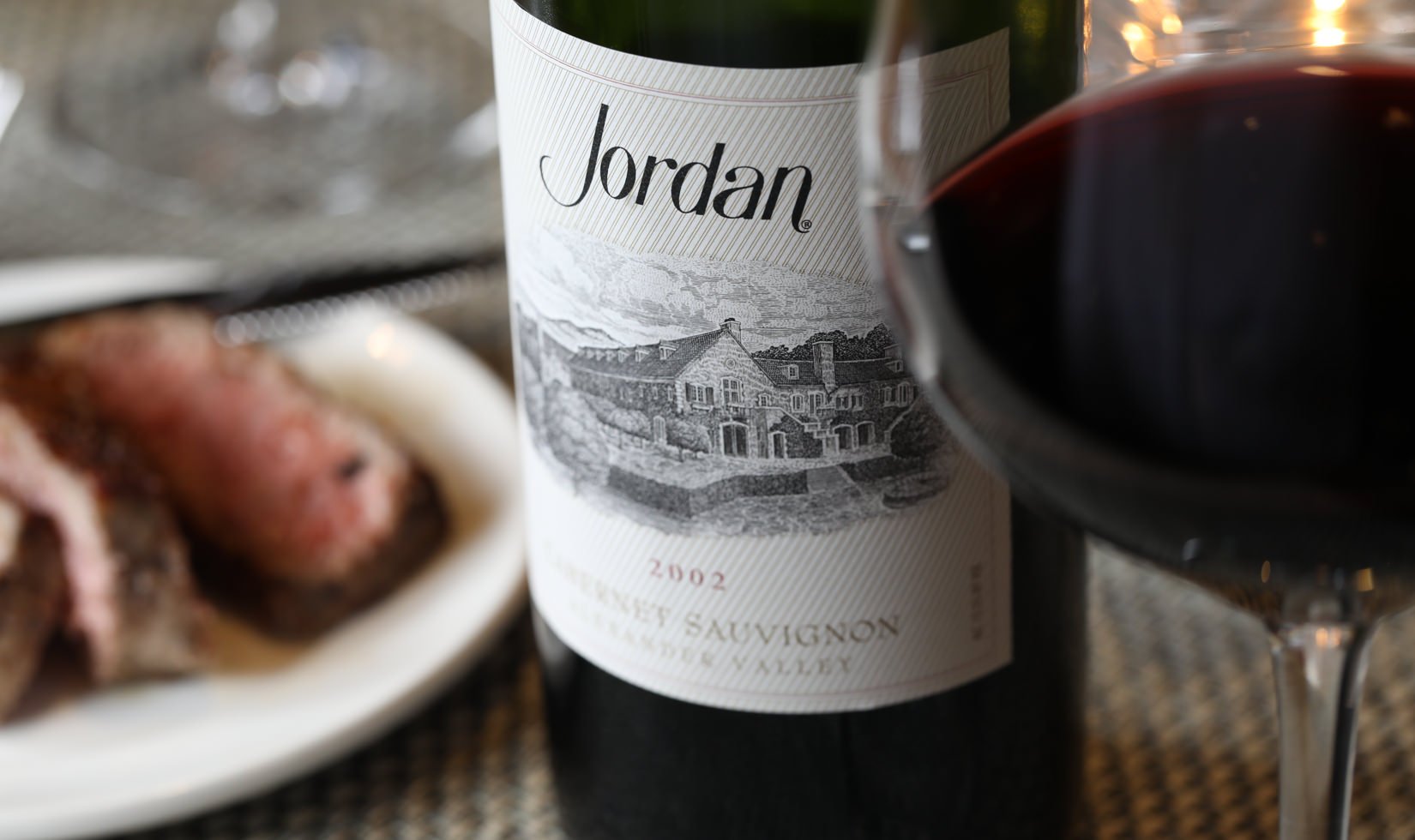
Flat Iron
A relative newcomer in popularity, flat iron comes from the shoulder and has a significant amount of marbling. It is flavorful and considered the second most tender cut after the tenderloin (which includes filet). Also known as top blade roast, this cut has a serious flaw—a tough, connective tissue running through the middle of the cut—which food scientists overcame in 2007 with a new technique for cutting flat iron steaks. Like other butcher cuts, such as flank or skirt steak, flat iron benefits from marinating and shouldn’t be cooked beyond medium to maintain its tenderness and flavor. A 3.5-ounce serving contains 22 grams of fat and 45 grams of protein.
Best Pairing:
An older California cabernet of balance with lower alcohol. The steak brought out an enticing cherry flavor on the palate and a long, lovely finish in the wine. The higher fat content in the meat coats the palate and helps integrate the wine. Baking spices were revealed in the wine as the pairing continued.
Wine: 2002 Jordan Cabernet Sauvignon Alexander Valley ($119)
Runners-Up:
Young Sonoma cabernets with lower alcohol and firm tannin structure. With a charred flat iron, the tannin in the wine was softened, and the peppery crust brought out some attractive spices in the young cabernet that were not present in most filet mignon pairings. This steak works well with bigger styles of cabernet, whether high in alcohol or lower.
Wine: 2013 Jordan Cabernet Sauvignon Alexander Valley ($55)
The char on the flat iron’s skin made the tannin and the fruit pop in a young, high-alcohol Napa cabernet. Sweetness of fruit was accentuated on the palate and finish. Peppery, charred flat iron is the cut that worked best with this style of powerhouse cabernet.
Wine: 2013 Plumpjack Oakville Cabernet Sauvignon Napa Valley ($120)
Other Observations:
Napa cabernets with elegant structure can pair well with flat iron steak. A pretty pairing where the steak brings out subtle cherry flavors and acidity, but be mindful of alcohol levels in the wine if you don’t like the heat of a wine on the finish.
Wine: 2013 Chateau Montelena Cabernet Sauvignon Napa Valley ($60)
A subtle Bordeaux with a seamless texture and soft tannins can be overpowered by this big, flavorful steak.
Wine: 2012 Pichon-Longueville Comtesse de Lalande Pauillac Bordeaux ($90)
Flat iron was the only wine that could stand up to the high-alcohol, young Sonoma cabernet that clocked in at 15.5% abv, though the pairing tasted sweet.
Wine: 2013 Lancaster Estate Cabernet Sauvignon Alexander Valley ($60)
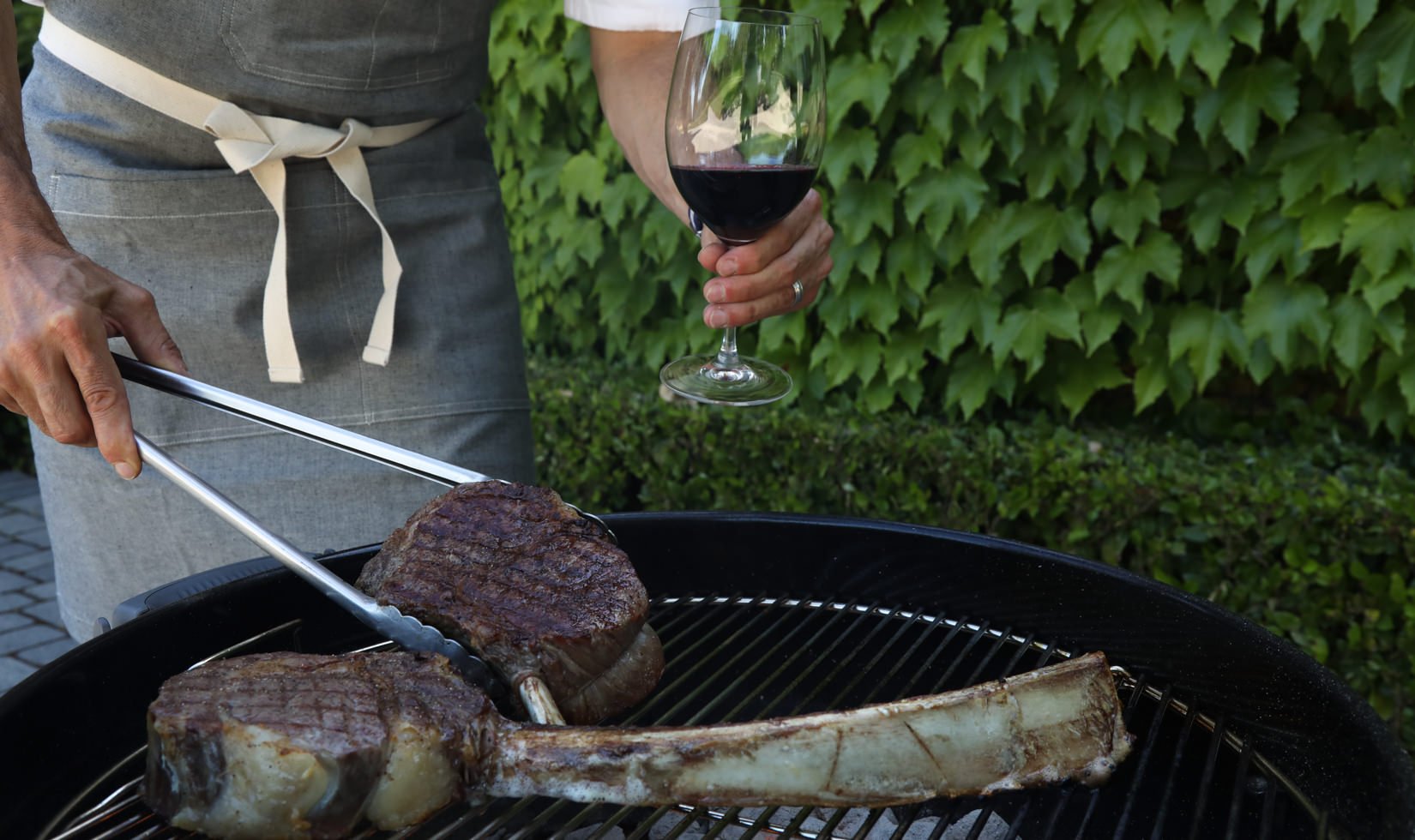
As always, the pleasure of food and wine pairing is subjective, and what’s most important is to drink the wines you love with the people you love for a memorable pairing. Hopefully these tips, however, will help you find a new favorite meal for your table.
What is your favorite steak and wine pairing?
